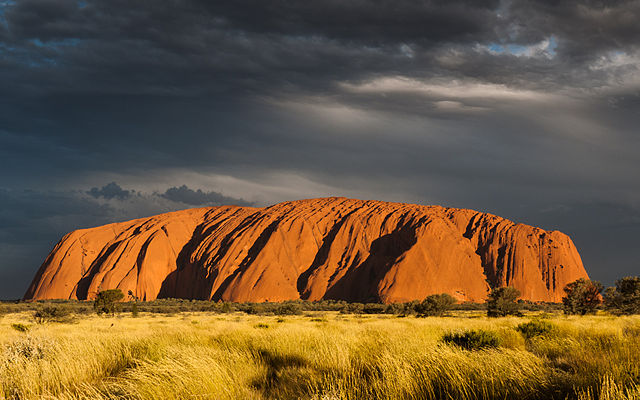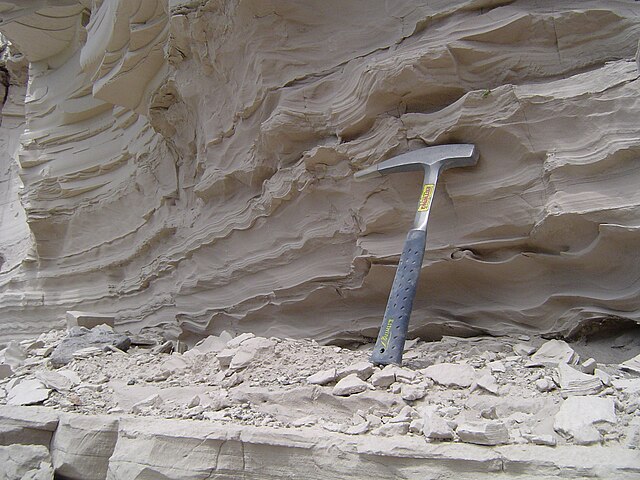Oolite or oölite is a sedimentary rock formed from ooids, spherical grains composed of concentric layers. Strictly, oolites consist of ooids of diameter 0.25–2 millimetres; rocks composed of ooids larger than 2 mm are called pisolites. The term oolith can refer to oolite or individual ooids.
Modern ooids from a beach on Joulter Cays, The Bahamas
Ooids on the surface of a limestone; Carmel Formation (Middle Jurassic) of southern Utah
Thin-section of calcitic ooids from an oolite within the Carmel Formation (Middle Jurassic) of southern Utah
Sedimentary rocks are types of rock that are formed by the accumulation or deposition of mineral or organic particles at Earth's surface, followed by cementation. Sedimentation is the collective name for processes that cause these particles to settle in place. The particles that form a sedimentary rock are called sediment, and may be composed of geological detritus (minerals) or biological detritus. The geological detritus originated from weathering and erosion of existing rocks, or from the solidification of molten lava blobs erupted by volcanoes. The geological detritus is transported to the place of deposition by water, wind, ice or mass movement, which are called agents of denudation. Biological detritus was formed by bodies and parts of dead aquatic organisms, as well as their fecal mass, suspended in water and slowly piling up on the floor of water bodies. Sedimentation may also occur as dissolved minerals precipitate from water solution.

Middle Triassic marginal marine sequence of siltstones (reddish layers at the cliff base) and limestones (brown rocks above), Virgin Formation, southwestern Utah, U.S.
Uluru (Ayers Rock) is a large sandstone formation in Northern Territory, Australia.
Claystone deposited in Glacial Lake Missoula, Montana, United States. Note the very fine and flat bedding, common for deposits coming from lake beds further away from the source of sediment.
Sedimentary rock with sandstone in Malta







